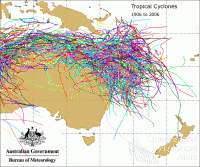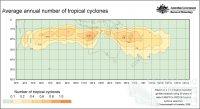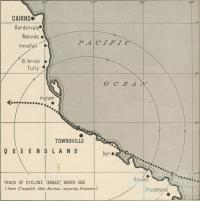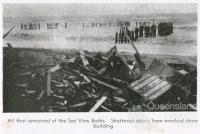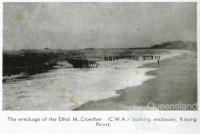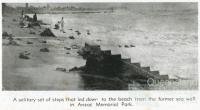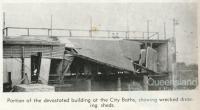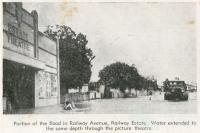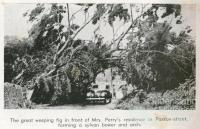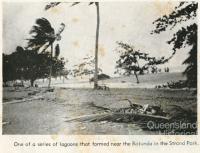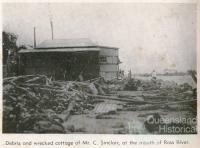- Home
- Quintessential Queensland
- Distinctiveness
- Perceptions
- Perceptions: how people understand the landscape
- From runs to closer settlement
- Geological survey of Queensland
- Mapping a new colony, 1860-80
- Mapping the Torres Strait: from TI to Magani Malu and Zenadh Kes
- Order in Paradise: a colonial gold field
- Queensland atlas, 1865
- Queensland mapping since 1900
- Queensland: the slogan state
- Rainforests of North Queensland
- Walkabout
- Queenslanders
- Queenslanders: people in the landscape
- Aboriginal heroes: episodes in the colonial landscape
- Australian South Sea Islanders
- Cane fields and solidarity in the multiethnic north
- Chinatowns
- Colonial immigration to Queensland
- Greek Cafés in the landscape of Queensland
- Hispanics and human rights in Queensland’s public spaces
- Italians in north Queensland
- Lebanese in rural Queensland
- Queensland clothing
- Queensland for ‘the best kind of population, primary producers’
- Too remote, too primitive and too expensive: Scandinavian settlers in colonial Queensland
- Distance
- Movement
- Movement: how people move through the landscape
- Air travel in Queensland
- Bicycling through Brisbane, 1896
- Cobb & Co
- Journey to Hayman Island, 1938
- Law and story-strings
- Mobile kids: children’s explorations of Cherbourg
- Movable heritage of North Queensland
- Passages to India: military linkages with Queensland
- The Queen in Queensland, 1954
- Transient Chinese in colonial Queensland
- Travelling times by rail
- Pathways
- Pathways: how things move through the landscape and where they are made
- Aboriginal dreaming paths and trading ways
- Chinese traders in the nineteenth century
- Introducing the cane toad
- Pituri bag
- Press and the media
- Radio in Queensland
- Red Cross Society and World War I in Queensland
- The telephone in Queensland
- Where did the trams go?
- ‘A little bit of love for me and a murder for my old man’: the Queensland Bush Book Club
- Movement
- Division
- Separation
- Separation: divisions in the landscape
- Asylums in the landscape
- Brisbane River
- Changing landscape of radicalism
- Civil government boundaries
- Convict Brisbane
- Dividing Queensland - Pauline Hanson’s One Nation Party
- High water mark: the shifting electoral landscape 2001-12
- Hospitals in the landscape
- Indigenous health
- Palm Island
- Secession movements
- Separate spheres: gender and dress codes
- Separating land, separating culture
- Stone walls do a prison make: law on the landscape
- The 1967 Referendum – the State comes together?
- Utopian communities
- Whiteness in the tropics
- Conflict
- Conflict: how people contest the landscape
- A tale of two elections – One Nation and political protest
- Battle of Brisbane – Australian masculinity under threat
- Dangerous spaces - youth politics in Brisbane, 1960s-70s
- Fortress Queensland 1942-45
- Grassy hills: colonial defence and coastal forts
- Great Shearers’ Strike of 1891
- Iwasaki project
- Johannes Bjelke-Petersen: straddling a barbed wire fence
- Mount Etna: Queensland's longest environmental conflict
- Native Police
- Skyrail Cairns (Research notes)
- Staunch but conservative – the trade union movement in Rockhampton
- The Chinese question
- Thomas Wentworth Wills and Cullin-la-ringo Station
- Separation
- Dreaming
- Imagination
- Imagination: how people have imagined Queensland
- Brisbane River and Moreton Bay: Thomas Welsby
- Changing views of the Glasshouse Mountains
- Imagining Queensland in film and television production
- Jacaranda
- Literary mapping of Brisbane in the 1990s
- Looking at Mount Coot-tha
- Mapping the Macqueen farm
- Mapping the mythic: Hugh Sawrey's ‘outback’
- People’s Republic of Woodford
- Poinsettia city: Brisbane’s flower
- The Pineapple Girl
- The writers of Tamborine Mountain
- Vance and Nettie Palmer
- Memory
- Memory: how people remember the landscape
- Anna Wickham: the memory of a moment
- Berajondo and Mill Point: remembering place and landscape
- Cemeteries in the landscape
- Landscapes of memory: Tjapukai Dance Theatre and Laura Festival
- Monuments and memory: T.J. Byrnes and T.J. Ryan
- Out where the dead towns lie
- Queensland in miniature: the Brisbane Exhibition
- Roadside ++++ memorials
- Shipwrecks as graves
- The Dame in the tropics: Nellie Melba
- Tinnenburra
- Vanished heritage
- War memorials
- Curiosity
- Curiosity: knowledge through the landscape
- A playground for science: Great Barrier Reef
- Duboisia hopwoodii: a colonial curiosity
- Great Artesian Basin: water from deeper down
- In search of Landsborough
- James Cook’s hundred days in Queensland
- Mutual curiosity – Aboriginal people and explorers
- Queensland Acclimatisation Society
- Queensland’s own sea monster: a curious tale of loss and regret
- St Lucia: degrees of landscape
- Townsville’s Mount St John Zoo
- Imagination
- Development
- Exploitation
- Transformation
- Transformation: how the landscape has changed and been modified
- Cultivation
- Empire and agribusiness: the Australian Mercantile Land and Finance Company
- Gold
- Kill, cure, or strangle: Atherton Tablelands
- National parks in Queensland
- Pastoralism 1860s–1915
- Prickly pear
- Repurchasing estates: the transformation of Durundur
- Soil
- Sugar
- Sunshine Coast
- The Brigalow
- Walter Reid Cultural Centre, Rockhampton: back again
- Survival
- Survival: how the landscape impacts on people
- Brisbane floods: 1893 to the summer of sorrow
- City of the Damned: how the media embraced the Brisbane floods
- Depression era
- Did Clem Jones save Brisbane from flood?
- Droughts and floods and rail
- Missions and reserves
- Queensland British Food Corporation
- Rockhampton’s great flood of 1918
- Station homesteads
- Tropical cyclones
- Wreck of the Quetta
- Pleasure
- Pleasure: how people enjoy the landscape
- Bushwalking in Queensland
- Cherbourg that’s my home: celebrating landscape through song
- Creating rural attractions
- Festivals
- Queer pleasure: masculinity, male homosexuality and public space
- Railway refreshment rooms
- Regional cinema
- Schoolies week: a festival of misrule
- The sporting landscape
- Visiting the Great Barrier Reef
It is claimed that tropical cyclones are the most feared weather phenomena to affect Australia. Their destructive powers pose immediate threats to the lives of those in their path, cause extensive property damage, and have long lasting implications for local communities. They are a major feature of Queensland life.
Cyclones as weather phenomenon
A cyclone is a large rain storm characterised by inward spiralling winds. The winds (approaching 300 km per hour) flow clockwise in the Southern Hemisphere and counterclockwise in the Northern Hemisphere. Severe tropical cyclones correspond to the hurricanes or typhoons of other parts of the world. The warm waters of the Pacific Ocean, particularly in the Coral Sea, provide ideal conditions for the formation of cyclones between the end of November and early May. In the average cyclone season, 10 tropical cyclones develop over Australian waters, of which six cross the coast, mostly over northeast Queensland (between about Mossman and Maryborough) and northwestern Australia (between Exmouth and Broome). While having the potential to cause extensive damage, tropical cyclones bestow upon many parts of northern Australia a significant proportion of their annual rainfall.
Cyclones are associated with highly destructive winds but often the accompanying storm surge, an increase in the water level above regular tidal flows, causes major damage. The severity of storm surges was evident in 1899 when Cyclone ‘Mahina’ struck Bathurst Bay killing 307 pearl divers and sailors and an unreported number of Aborigines. Contemporary oral evidence and early scientific estimates placed the height of the accompanying storm surge at 42 feet or 14 metres. Alongside storm surges, torrential rain can devastate local agriculture, inundate and isolate communities, and destroy what remains of buildings damaged by high winds.
Preparing for cyclones
The earliest recorded attempt to prepare Queenslanders for a cyclone was made by J.D. Switzer in 1889 who offered his extensive seafaring experience to advise ship captains how to avoid the ‘circular storms’ prominent in Queensland waters. However, the ability to detect, track, and warn coastal communities about storms remained limited until World War II brought significant technological advancements including advanced radar to track storms. Since then a range of technologies including automatic weather stations, satellite tracking, and sophisticated computer modelling have allowed improved forecasting and tracking of likely cyclones. Details of a cyclone can be communicated by radio and television before power fails. Even so, a 1970 report found that residents around Proserpine still favoured the age old system of flying cyclone warning flags from prominent buildings in the area.
‘A cold wet hell’: experiencing cyclones
The life-threatening wind and torrential rain has been described as a ‘cold wet hell’. Witnesses often describe the conditions before a cyclone as being eerily calm, with little wind. This calm is short lived. Rapidly dropping barometric pressure and a noise that sounds ‘like an express train bearing down’ signals the cyclone’s approach. As wind and rain relentlessly persist the lives of those in the cyclone’s path are threatened. The lighthouse keeper on Flat Top Island near Mackay feared that he and his family, together with the building they were sheltering in ‘would be hurled bodily into the sea’. The threat of structural collapse meant the State Emergency Service (SES) had to rescue five people from Dalziel’s café in Babinda at the height of the 1986 Cyclone Winifred.
For survivors of a cyclone the psychological effects of their experience may be long lasting. When a Japanese pearl diver named Seto finally struggled ashore after swimming for six hours after Cyclone ‘Mahina’ the experience meant his ‘over-wrought nerves gave way, and he became unconscious’ for several hours. A James Cook University study in 1991 of survivors of Cyclone ‘Winifred’ found up to one third of respondents admitted suffering from psychological effects including ‘shattered nerves’, ‘worries’, and ‘fear of storms and future cyclones’.
Rebuilding society
While the loss of life and property as a result of a cyclone is devastating, after it passes the catastrophic events are invariably subsumed by a need to rebuild local communities. The first thoughts of many survivors are of their fellow residents. As soon as Bowen’s 1960 Cyclone ‘Anonymous’ had dissipated, George Burgher was ‘worried about my neighbours and wanted to go and see how they were faring’. Burgher’s testimony reflected the community spirit of many small towns hit by cyclones. Following Cyclone ‘Winifred’ neighbours reported scores of impromptu barbecues on the nights after the cyclones as the lack of electricity meant frozen meat would spoil.
Before the formation of the SES, local committees often formed to make emergency repairs and direct local relief efforts in a cyclone’s aftermath. Re-building was not always an easy task, and financial capital to rebuild churches and schools was difficult for residents in the wake of personal losses. Heightening the need to rebuild was the reliance of many cyclone-ravaged communities on local primary industries which were often devastated by cyclonic activity.
Banana prices
Severe Tropical Cyclone Larry crossed the tropical north Queensland coast near Innisfail during the morning of Monday 20 March 2006 as a marginal Category 5 cyclone. No lives were lost and no serious injuries were reported, however, damage to infrastructure and crops was extensive with the total estimated loss upwards of half a billion dollars. After Cyclone Larry banana prices jumped a staggering 250 per cent contributing to inflation and interest rate rises across Australia.
Babalmurri
The cyclone plays a significant cultural role and is a totem for the Jirrbal people of the rainforest near Tully. Babalmurri, cyclones, are 'talked up' from two sites, nyanyjaymi, places their spirit comes from on their own country. Storms can be created from the rocks at Bellenden, and larger storms and cyclones from the bottom of the Davidson Falls. The bottom of the falls is dangerous, only gijjuns, big water lizards and bungaru, tortoise may walk there with safety, and it remains taboo unless accompanied by a senior Jirrbal law man. If any of the sacred earth near this site is deliberately disturbed and falls into the Gorge, a cyclone will be created. The sight of a garamgaram, silver gull, flying from the coastline inland towards the mountains, indicates to the Jirrbal people that the cyclone is coming.
Radio
Radio is the sole connection to the outside world for many Queenslanders during cyclones, floods and bushfires. A portable battery operated radio is an essential part of an emergency kit. Listening to the local radio station is a vital and at times lifesaving activity, not merely a source of entertainment. Emergency services use local radio stations to broadcast road closures, fire locations and movements, evacuation areas and flood levels. They use radio to advise when and where power will be restored, and provide details of the path and wind velocity of approaching cyclones.
Naming cyclones
The practice of naming cyclones, first introduced by Queensland Government Meteorologist Clement Wragge in the late nineteenth century, lapsed with his retirement in 1902, but was re-introduced by the Bureau of Meteorology in 1963. Initially, cyclones were given female names, but from 1975 Australian cyclones were allocated both male and female names.
References and Further reading (Note):
Norman Bartlett, The pearl seekers, London, Melrose, 1954
References and Further reading (Note):
A.T. Bath, ‘The Mackay cyclone of 21 January, 1918’, The meteorological magazine of Australia, Melbourne, Bureau of Meteorology, 1957
References and Further reading (Note):
George Burgher, How Bowen was wrecked and rebuilt: a study of 1958’s ’Cyclone Anonymous’, Bowen, Bowen Independent, 1960
References and Further reading (Note):
Eric Butterworth, Cyclone impact: socio-economic aspects of Cyclone Winifred, February 1986, Townsville, James Cook University, 1991
References and Further reading (Note):
The pearling disaster, 1899: a memorial, Brisbane, Outridge Printing Co, 1899
That wind, Fay Donolly was thinking as she woke, it was like a spiteful bird, swooping down and lifting away. She saw it as a brown sea-eagle, poised somewhere in the void above the house, watching with baleful eyes for a chance to strike in earnest. Now it was still as death, now it made a show of dropping for the kill. And the screech of its wings, as it swept down, stopped the heart for a moment, so that it started again with a flutter.
Opening paragraph of Vance Palmer, Cyclone, A & R, Sydney, 1947

